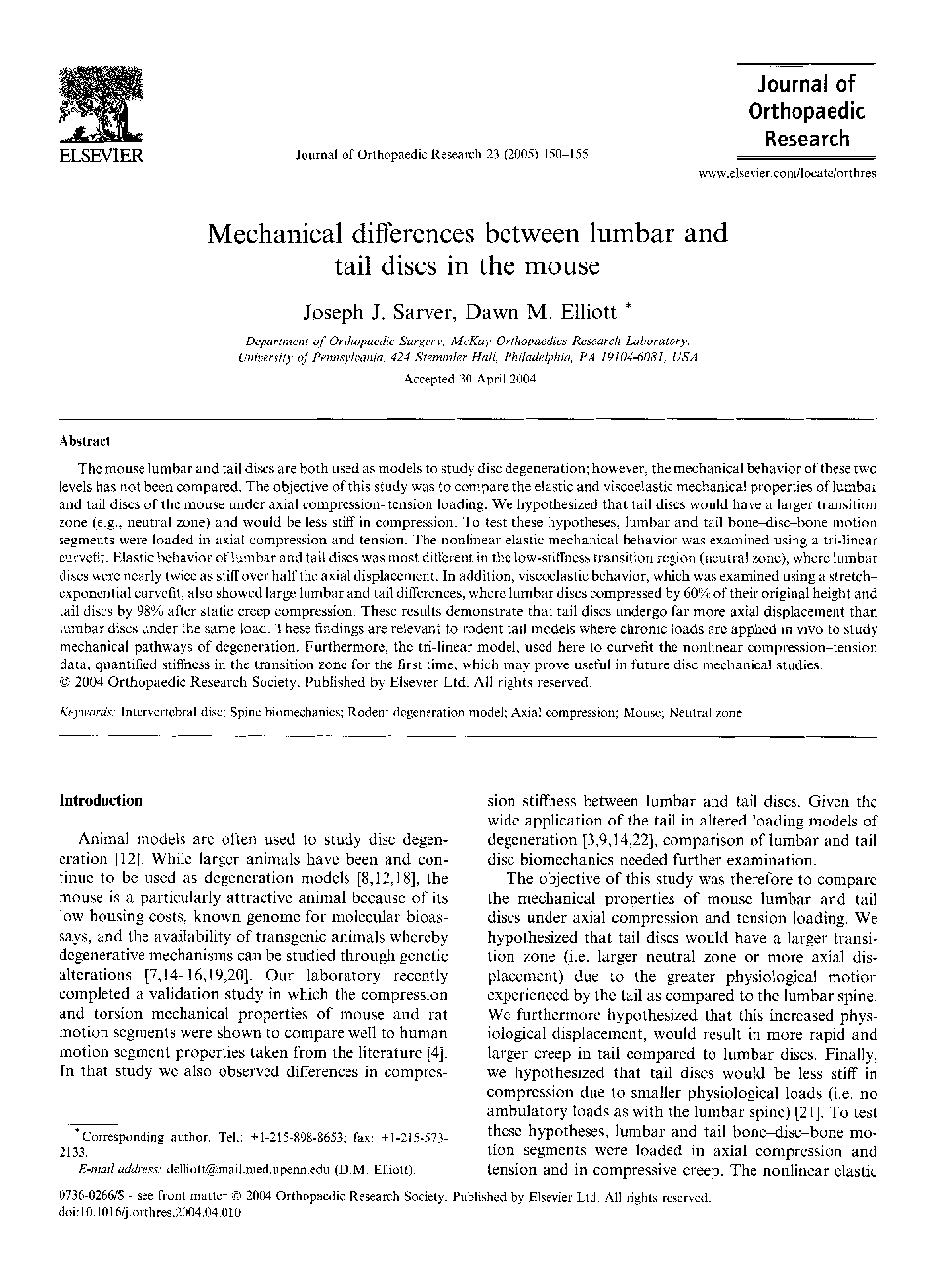| Article ID | Journal | Published Year | Pages | File Type |
|---|---|---|---|---|
| 9354040 | Journal of Orthopaedic Research | 2005 | 6 Pages |
Abstract
The mouse lumbar and tail discs are both used as models to study disc degeneration; however, the mechanical behavior of these two levels has not been compared. The objective of this study was to compare the elastic and viscoelastic mechanical properties of lumbar and tail discs of the mouse under axial compression-tension loading. We hypothesized that tail discs would have a larger transition zone (e.g., neutral zone) and would be less stiff in compression. To test these hypotheses, lumbar and tail bone-disc-bone motion segments were loaded in axial compression and tension. The nonlinear elastic mechanical behavior was examined using a tri-linear curvefit. Elastic behavior of lumbar and tail discs was most different in the low-stiffness transition region (neutral zone), where lumbar discs were nearly twice as stiff over half the axial displacement. In addition, viscoelastic behavior, which was examined using a stretch-exponential curvefit, also showed large lumbar and tail differences, where lumbar discs compressed by 60% of their original height and tail discs by 98% after static creep compression. These results demonstrate that tail discs undergo far more axial displacement than lumbar discs under the same load. These findings are relevant to rodent tail models where chronic loads are applied in vivo to study mechanical pathways of degeneration. Furthermore, the tri-linear model, used here to curvefit the nonlinear compression-tension data, quantified stiffness in the transition zone for the first time, which may prove useful in future disc mechanical studies.
Related Topics
Health Sciences
Medicine and Dentistry
Orthopedics, Sports Medicine and Rehabilitation
Authors
Joseph J. Sarver, Dawn M. Elliott,
